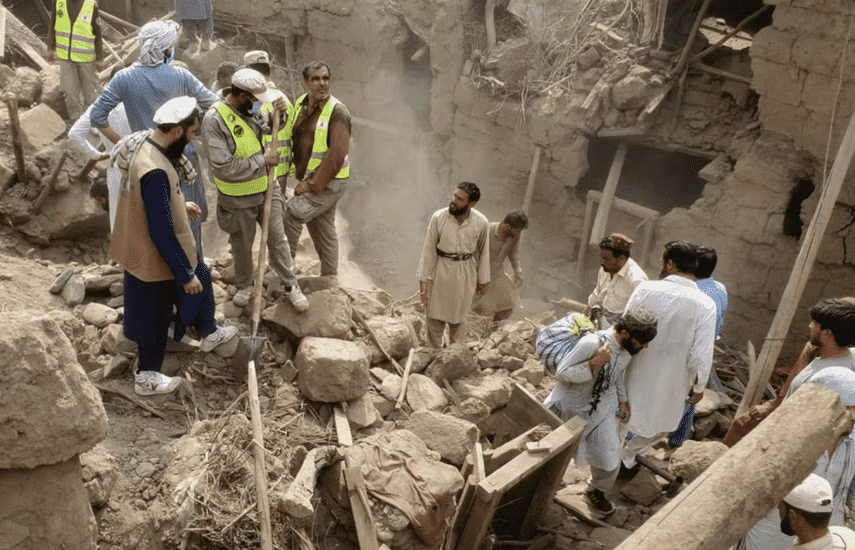A 6.3 magnitude earthquake jolted northern Afghanistan early Monday, killing at least 20 people and injuring more than 300 others, according to local officials. The tremor, which struck before dawn, has once again exposed the country’s fragile infrastructure and limited disaster response capacity.
The U.S. Geological Survey (USGS) reported that the quake’s epicenter was located 22 kilometers west-southwest of the town of Khulm, striking at 12:59 a.m. local time at a depth of 28 kilometers.
Sharafat Zaman, a spokesperson for the Ministry of Public Health, confirmed that the quake killed at least 20 people and injured 320 others. Most of the injured, according to Yousaf Hammad of Afghanistan’s disaster management agency, suffered minor wounds and were discharged after receiving initial treatment.
The Afghan Ministry of Defense said that rescue and emergency teams had reached the hardest-hit areas in Balkh and Samangan provinces and had begun operations to assist families, transport the injured, and provide emergency supplies.
Taliban government spokesman Zabihullah Mujahid said in a post on X that the earthquake struck Balkh, Samangan, and Baghlan provinces, causing both casualties and financial losses. “Relevant governmental organizations are busy trying to get needed help to the people affected by the quake,” he added, expressing sorrow over the destruction.
The quake was also felt in Mazar-e-Sharif, the capital of Balkh province, where social media footage showed damage to the city’s historic Blue Mosque, one of Afghanistan’s most revered landmarks. Several bricks fell from its walls, though the centuries-old structure remained intact.
In Kabul, tremors were felt strongly, and the Defense Ministry reported that a rockslide temporarily blocked the main highway linking Kabul and Mazar-e-Sharif. The route has since been cleared, and rescue teams transported several injured travelers to hospitals.
The United Nations in Afghanistan said on X that Monday’s quake comes just weeks after another deadly earthquake struck the country’s east. “We stand with the affected communities and will provide the necessary support,” the U.N. said, adding that its teams were already on the ground assessing needs and delivering aid.
Afghanistan remains highly vulnerable to earthquakes, with many homes constructed using mud bricks and wood, particularly in rural areas. These structures often collapse during seismic activity, making rescue operations difficult.
Earlier this year, on August 31, a magnitude 6.0 earthquake near the border with Pakistan killed more than 2,200 people. And on October 7, 2023, another 6.3 magnitude quake followed by strong aftershocks, left at least 4,000 people dead, according to the Taliban government.
Monday’s disaster adds to a series of devastating quakes that have repeatedly shaken Afghanistan, underscoring the urgent need for stronger disaster preparedness and resilient infrastructure.





